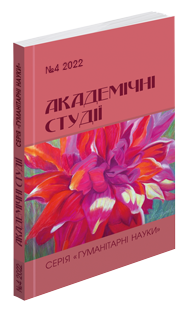Abstract
The presented article is devoted to the study of the comprehensive term "memory", its importance and influence on the quality of interpretation. It is outlined that memory, as a term, refers to the spheres of psychology and biology, and this concept is not fully formulated, since each scientist from the given spheres formulates and interprets the meaning of memory in a different way, and in addition to this, the process of memory tying in a similar manner is a controversial issue. The authors of the article substantiate the influence and importance of memory in the process of oral translation. The work analyzes the scientific works of such scientists and scholars in the field of interpretation and memory as: Alan D. Baddley, Roberts, Fernandez and Cairns, Daniel Gile, Weihe Zhong. The article pays considerable attention to the importance of the field of interpretation in various spheres of life in the modern world and its influence on international cooperation and communications. Evidence factors that can be traced during translation. The authors of the article emphasized the professional qualities and skills of translators, and the importance of an extensive memory was proven accordingly. The difference and feature of short-term and longterm memory is defined. The basis for why short-term memory is used in interpretation is formulated. It is described in what way and for what time the information remains with each type of memorization. The authors of the article refer to the work of Roberts, where he formulates the number of blocks of information that are memorized during STM. The main theories are identified, the reason of which is the loss of information when using short-term memory. Complementing this, the authors drew attention to basic exercises for improving short-term memory. A variety of memory models are outlined, the main ones include: Covance's memory model, Gile's effort model, Atkinson and Shiffrin's memory model, Hitch and Baddley's working memory model, and Daro and Fabbro's memory model. Heil's model and its difference from the previous ones are considered in more detail, and the stages and phases that the translator goes through during translation are also evidenced. The impact of memory on other factors during the translation process is highlighted. Tips for memory development are provided.
References
Вправи для послідовного перекладу (2001). URL: https://www.courts.michigan.gov/49f693/siteassets/court-administration/ access-temporary/foreign-language/consecutiveexercises.pdf
Козелецький Ю. Психологічна теорія вирішення. Москва : Прогрес, 1979. 415 с.
Atkinson, R. L., Stiffrin, R. M. (1968). Human memory: A proposed system and its control processes, in K.W. Spence and J.T. Spence (eds.), The psychology of learning and motivation. Vol.2. London : Academic Press.
Baddeley, A. D. (1966). The influence of acoustic and semantic similarity on long term memory for word sequences, in Quarterly Journal of Experimental Psychology, 18, 302–309.
Baddeley, A. D., Hitch, G. (1974).Working memory.
Baddeley, A. D., Thompson, N., and Buchanan, M. (1975). Word Length and the Structure of Memory , in Journal of Verbal Learning and Verbal Behaviour, I , 575–589.
Baddeley, A. D. ( 2000). The episodic buffer: a new component of working memory?
Bruno, F. J. (2002). Psychology: a self-teaching guide. New Jersey : John Wiley & Sons, Inc.
Baker, Mona, Gabriela, Saldanha (2009). Routledge Encyclopedia of Translation Studies. Taylor & Francis e-Library
Fernandez, E. M., & Cairns, H. S. (2010). Fundamentals of psycholinguistics. WILEY-BLACKWELL A John Wiley & Sons, Ltd., Publication. 11. Gile, D, 1995b, Basic Concepts and Models for Interpreter and Translator Training, Amsterdam & Philadelphia : John Benjamins.
Hebb, D. O. (1949). The organization of behavior; a neuropsychological theory. Wiley.
Keppelk, G., and Underwood, B. (1962). Proactive Inhibition in Short-term Retention of Single Items. Іn Journal of Verbal Learning and Verbal Behaviour, 1, 153–161.
Kintsch, W. (1998). Comprehension: a paradigm for cognition. Cambridge: Cambridge University Press.
Marshuetz Ferguson (2017). Short-term memory. URL: https://www.britannica.com/science/short-term-memory
Matsumoto, D. & Juang, L. (2007). Culture and psychology (4th Ed.). New York : Thomson Wadsworth.
Naseri, M. (2017). The Importance of Memory and Notetaking in the Process of Interpreting. Рр. 1–5 URL: https://www.researchgate.net/publication/346680753_The_Importance_of_Memory_and_Notetaking_in_the_Process_ of_Interpreting
Peterson, R. L., and Peterson, M. J., (1959). Short term retention of individual items, in Journal of Experimental Psychology, 58, 193–198.
Roberts, R. P. (2014 ). Enhancing short-term memory for accurate interpreting.
The Importance of Listening and Short-Term Memory in Interpreting. URL: https://translationjournal.net/April- 2016/the-importance-of-listening-and-short-term-memory-in-interpreting.html
Turković, M. (2013). Memory in interpreting. URL: https://zir.nsk.hr/islandora/object/ffos%3A1376/datastream/ PDF/view
Waughw, N.,and Norman, D. (1965). Primary Memory, in Psychological Review, 72, 89–104.
Zhong,W. (2003). Memory Training in Interpreting. URL: https://translationjournal.net/journal/25interpret.htm

